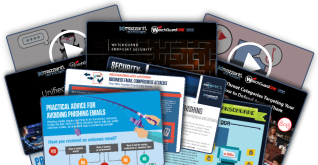In today’s rapid digital landscape, your organization needs applications that are adaptive, secure, and scalable. Meeting these demands is tough with traditional monolithic architectures, where all functionality is bundled into a single codebase. Enter microservices architecture—a modern approach where your application is divided into smaller, independently deployable components, each serving a specific purpose. Microservices have revolutionized how developers build and scale applications, and they can do the same for your business.
Enhanced Scalability and Resource Optimization
Scaling a monolithic application often means replicating the entire system, even if only one component is under heavy load. Microservices solve this by letting you scale each service individually. For example, if your e-commerce platform’s payment processing module is overwhelmed, you can scale just that service—saving both resources and costs.
- Containerization and Orchestration: Tools like Docker and Kubernetes make horizontal scaling straightforward, and help you manage your microservices efficiently. Cloud services from eMazzanti can help you leverage these technologies for seamless scaling.
Accelerated Development and Continuous Delivery
Microservices allow your teams to develop and operate components in isolation, speeding up your development cycles and simplifying maintenance. This modular approach leads to:
- Faster Development Cycles: Smaller codebases are easier to understand, maintain, and test.
- Continuous Delivery: Deploy changes or new features for one service without redeploying the entire application, reducing downtime and risk. Explore how managed services can support your agile workflows.
Improved Fault Isolation and Resilience
With monolithic systems, a single failure can crash your entire application. Microservices reduce this risk by isolating failures. If your online store’s inventory service fails, customers can still check out using cached data or fallback mechanisms. Advanced tools like service meshes and circuit breakers further enhance resilience.
- Service Meshes and Circuit Breakers: Technologies like Istio and Hystrix help ensure faults in one service don’t cascade across your application.
Technology Agnosticism and Flexibility
Microservices empower your teams to select the best technology stack for each service. Need high performance? Use a low-level language like C++. Need rapid analytics? Choose Python. This polyglot approach means you always use the right tool for the job, optimizing performance and maintainability.

Simplified Repairs, Updates, and Modernization
Your developers can update or repair one service without touching the rest of your system, minimizing the risk of introducing new bugs. Approaches like the Strangler Fig Pattern let you modernize obsolete services incrementally, ensuring business continuity.
- Minimized Risk: Update individual services independently, reducing downtime and operational risk.
- Incremental Modernization: Transition legacy components to modern technologies without a complete rewrite.
Team Autonomy and Agile Collaboration
Microservices fit perfectly with agile methodologies, enabling smaller, cross-functional teams to own and manage specific services. This structure boosts:
- Ownership: Teams have clear responsibility for their codebases, reducing dependencies on others.
- Productivity: Increased collaboration and accountability lead to faster delivery and innovation.
Cloud-Native Integration and Experimentation
Microservices are designed for the cloud. They integrate seamlessly with cloud-native technologies such as serverless computing and API gateways, allowing you to:
- Optimize Resource Usage: Run individual services only when needed, saving costs.
- Secure Communication: API gateways efficiently manage interactions between services and clients. Learn more about cloud computing opportunities.
Microservices also empower you to experiment with new features or services without risking your core application. You can A/B test, roll out innovations to limited audiences, and iterate based on feedback—all while maintaining a stable user experience.
Reduced Time to Market and Cost Efficiency
Independent deployment and updates mean you can deliver new products or features quickly. This agility gives you a competitive edge, especially in fast-moving industries like e-commerce, fintech, and entertainment. Over time, the benefits of microservices—optimized resource use, faster development, and reduced downtime—translate into significant operational savings.
Ready to unlock the full potential of microservices for your business? Contact eMazzanti today to discover how we can help you architect, deploy, and manage scalable, resilient, and innovative applications that drive your success.







